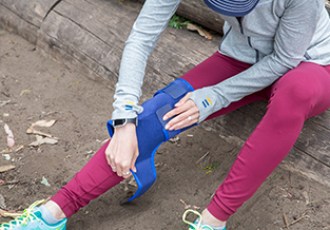BestReviews is reader-supported and may earn an affiliate commission. Details
We recommend these products based on an intensive research process that's designed to cut through the noise and find the top products in this space. Guided by experts, we spend hours looking into the factors that matter, to bring you these selections.

No parent wants to see their child in pain. But when a baby or a child is constipated, the pain is obvious, and it can get pretty bad. Constipation can change a child’s eating patterns and even interrupt sleep … both for the child and the parent. Fortunately, you can give your child a safe and effective over-the-counter laxative to alleviate occasional constipation.
First, though, we must mention that constipation in young children is usually a simple problem that occurs only occasionally. However, regular constipation that cannot be alleviated with a laxative could signify a more serious problem.
Pay attention to your child’s bowel habits and problems to make sure you don’t miss something significant, and contact a pediatrician if you’re concerned about anything related to your child’s health.

If you see your child struggling to pass stool, it’s possible that they are constipated. When a child suffering from constipation is finally able to pass stool, it may be large and hard or even pellet-like. The American Academy of Pediatrics has published guidelines to help parents figure out if a child is constipated and needs medication.
The average baby under six months has two to three bowel movements per day. But kids are all a little different, and having one to five stools per day is possible and normal. Formula-fed babies will have fewer bowel movements than breast-fed babies.
Slightly older babies have an average of two bowel movements per day. But again, one to five stools per day is possible and normal.
A toddler may have between one and three bowel movements per day. Some young children will have bowel movements as infrequently as every other day for a week or two without having problems.
One bowel movement per day is common for preschool-aged kids, but some kids will have two. Others will have a bowel movement every other day without any problems.
When shopping for a laxative for your child, you will likely find two options for the method of delivery. The right method depends on the age of the child and how quickly you want him to feel relief.
Oral laxatives come in liquid and tablet form. These products take anywhere from a few hours to a couple of days to work. They aren’t designed for immediate alleviation of constipation pain.
Liquid: You may be able to mix a liquid laxative with another drink, like fruit juice, to make it more palatable for your child.
Tablets: Most kids’ laxative tablets are chewable. Children at least two or three years old who can easily chew food will have good results with tablets. Magnesium hydroxide, sodium phosphate, or magnesium oxide often constitute the working ingredients in laxative tablets.
A rectal laxative comes in the form of a suppository or enema. Relief usually comes anywhere from a few minutes to a couple of hours after it is administered.
Enema: An enema for a child looks similar to an enema for an adult, but the dose is smaller. Usually consisting of saline solution, it works very fast. Unless otherwise recommended, children less than two years of age should not receive enemas.

If you’re concerned about giving your child a laxative, you’re not alone. Administering any type of medication to someone so young can be nerve-wracking for parents.
But as long as you follow the directions of your pediatrician – and you carefully adhere to the dosage instructions on the package – you can feel comfortable administering this medication.
As with any medication, long-term laxative use could be dangerous. Alleviating the symptoms of constipation could actually mask a larger medical problem. If you’re concerned, it’s best to contact a doctor.
You can expect to pay anywhere from a few dollars to about $20 for a kids’ laxative. The price depends, in large part, on the type of product you’re buying.
A simple glycerine suppository won’t cost much at all, but an all-natural laxative that has been specially formulated without any harsh ingredients could cost $10 or more.
When shopping for a kids’ laxative, you may also find that certain products cost a little more because they’re designed specifically for kids. For example, a drinkable laxative that tastes like soda pop or a chewable tablet that’s flavored like bubble gum or fruit may cost several dollars more than the “adult” equivalent of a plain-tasting liquid laxative or capsule.
If your child suffers constipation regularly, you can try a few other things to alleviate the problem.
Add extra fiber to her diet. Popcorn, high-fiber cereal, fruits, and vegetables can help with regularity.
Encourage water consumption. As you increase fiber in your child’s diet, you also need to increase water intake. More liquid helps the stool become softer and easier to pass.

A. Nearly all children suffer from constipation at least once. Most of the time, constipation is a temporary problem that you can alleviate with a laxative. However, it is sometimes the sign of a more serious health condition. If your child has a lingering constipation for a few days, it’s worth asking the pediatrician about it.
A. Some people try to relieve constipation through dietary changes rather than with laxatives. Others change the child’s diet and provide laxatives as needed. Both approaches can work well, but all kids are different. You may find a combination that works perfectly for one child but not another.
Get emails you’ll love.
Learn about the products you’re wondering if you should buy and get advice on using your latest purchases.
